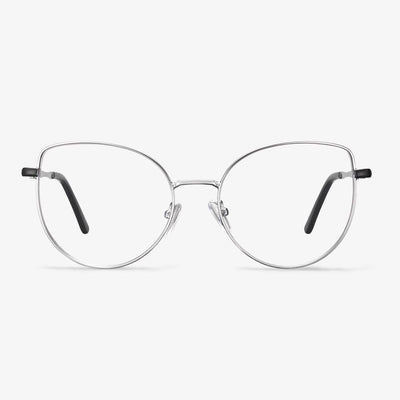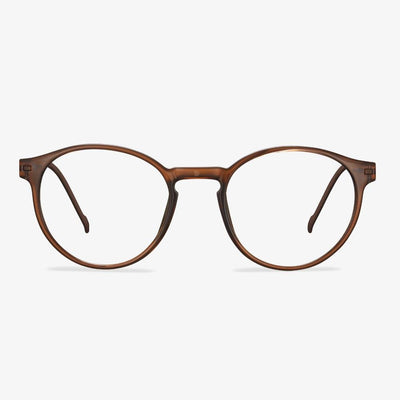Identify reliable online stores
Online stores division of labor has customer service, processing, packaging, warehousing, after-sales service, operation, art, etc. For processing accuracy, although the equipment is now much higher than before, as long as it is artificial, there will be errors. Even with the highest Essilor automatic grinding machine at present, it is possible to produce errors when the center point and the suction cup are manually operated. After processing is completed, a responsible shop will recheck the number. If the error is large, it must be reconfigured. The formal glasses mall can ensure that the true lens and this is the basic point of a good pair of glasses. Find reputable brands that are proven and believed by most consumers. The online shops should have perfect pre-sale and after-sales service. Professional pre-sale service can give professional guidance.
The sporty style
Sporty style frames are a little cool, full of vitality, well-designed. They pay attention to every detail, with publicity but not exaggerated feelings. With good material, they effectively prevent collision injury to your eyes in the process of movement, greatly improving safety. The style is simple and smooth, and the appearance is dynamic and fashionable, and the color collocation is diversified. With the integration of four progressive technology to better protect your eyes, they are your outdoor leisure tourism sports choice.
Recommended Glasses for Heart Shaped Face
Here, we will show you some recommended heart shaped face glasses.
Circular frames: The first pair of glasses for heart shaped faces we want to recommend is the circular frame glasses. Round frames provide contrast and can help to soften your angular features. They draw attention to your eyes and cheekbones and away from your chin or forehead.
Rectangular frames: rectangular frames are able to provide balance on heart shaped faces. They add structure to curvy features and can make your forehead appear narrower. These rectangular frames provide a professional look and don’t draw much attention to themselves.
Rimless and semi-rimless frames: as for glasses for heart shaped faces, rimless and semi-rimless glasses are recommended. Rimless glasses don’t highlight anything and let your facial features speak for themselves. Semi-rimless glasses can help balance your forehead and draw attention downwards to your jawline.
Single Vision vs Progressive: What Are Their Differences
With single vision lenses, you can also just use the center of the lenses to avoid prismatic effects if your prescriptions are very unequal for both eyes.
As for progressive vs single vision, they also have differences in frame selection. You will stick to frames when choosing progressive lenses that will provide you with a minimum height of 14mm from the point you are looking through the lenses into the distance to the point you are looking down while you read.
Besides the above differences, they are also some other differences between single vision glasses and progressive lenses. You can choose either one based on your needs. To choose glasses, Koalaeye glasses are recommended. They come in stylish and at a cheap price.
The Advantages of Aspheric Lenses
From the above, you have learned some basic information about aspheric lenses. In this section, we will show you some advantages of the aspherical lens. Apart from the style of aspheric lenses, most people choose them because the following reasons:
- Improved performance
- Spherical aberration correction
- Slimmer and thinner profile
- More frame options
- Improved image quality
- Sleeker profile
- Lightweight and comfortable
- More natural appearance
- Improved peripheral vision
- Multiple lens designs to choose from
So, aspheric lenses come at a lot of advantages. However, everything has two sides. Hence, there are some negative voices of aspherical lens. Therefore, in the following section, we will show you the disadvantages of the aspheric lenses.
Types of Varifocal Lenses
As is well known, there are several types of varifocal lenses. So, in this section, we will list some the types of varifocal lenses.
Standard varifocal lens: standard varifocal lenses are the entry-level varifocal options and are chosen as an enhanced alternative to bifocals. They have clear and fairly wide focal areas for distance, reading, and in between.
Premium varifocal lens: premium varifocal lenses are also called free form varifocals or back surfaced digital varifocal lenses. It offers much clearer vision at all points and is a significant step up from a standard varifocal lens in terms of vision, clarity, focus, and ease of adapting to them. They are created using the latest computer-driven equipment and have a wider field of vision at the distance, intermediate/in-between, and reading focal points.
What is blue light?
To prevent blue light, we must first understand what blue light is. The visible light with a wavelength range of 400-500 nanometers is called blue light. The light sources used in daily LED lighting and display products, including mobile phones, flat panels, and TVs, are mostly LED light sources excited by blue light. However, not all blue light is harmful to the human body. The human eye has an extremely low tolerance to blue light radiation in the 400-440 nanometer range. When the light intensity enters this threshold, photochemical damage is likely to occur. However, blue light radiation in the range of 459-490 nanometers is essential for regulating the human body's circadian rhythm and can affect the secretion of human melatonin, which in turn has an impact on the body's biological clock, alertness, and mood.
Scientifically effective anti-blue light lenses must not only block harmful blue light but also cannot filter beneficial blue light. Most of the ineffective anti-blue light products on the market currently have two types of problems. One is that there is almost no protective effect on the blue light in the vulnerable zone of the human eye. The other is excessive protection, shielding the blue light spectrum in the beneficial band so that the blue light that is beneficial for physiological adjustment cannot enter the human eye. At the same time, the color of the lens is yellow, which is prone to color shift, aggravating visual fatigue, and even inducing the risk of myopia.











































